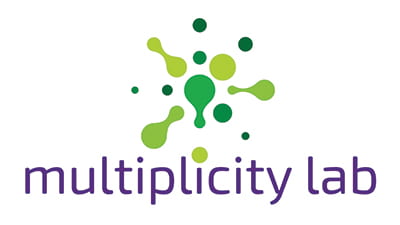Image of the Week: Trust Their Genius
October 13, 2024Trust Their Genius:
Andrea Reiser Cummins, K-4 Math Support Teacher, Wilmette, IL, US
This year, we’ve invited members of our Teacher Advisory Board to share some of their favorite activities with you through the image of the week newsletter, and this week is our first in the series. Look for these scattered throughout the year and know that each one is based on the author’s experience working with students in their own context with an image they love. Here is our first, from Andrea:
I started using multiplicity lab daily last school year and want to highlight a story from last spring when I used this week’s image. As the math support teacher at my school, I help teachers analyze student data, determine needs, and develop a plan of action to address those needs. After a unit test last February, the fourth-grade teachers determined that a group of students would benefit from targeted instruction on fractions. I was excited to start with these students because I previously taught fourth grade at that school for four years. Because of my time as a fourth-grade teacher, I felt equipped with lesson plans, tasks, and activities.
To prepare for my meetings with this group of fifteen students, I listed all my favorite fraction tasks and got to work prepping. As a classroom teacher, I always had 5-10 minutes of a targeted warm-up, usually where students worked through review concepts on a whiteboard. As I planned the lesson, the idea of using multiplicity lab to shake up this part of my practice popped into my head. Over the school year, I used multiplicity lab images to facilitate co-taught math talks with the kindergarten teachers, so I was eager to try it out with my fourth graders. Every time I presented an image to the kindergartners, I was struck by how creative and unique their responses were. My experience in kindergarten got me wondering, “What would happen if I presented a multiplicity lab image as a launching point for our fraction activities?”
Next, I dug into the multiplicity lab website for the perfect image. As I searched, I wondered if the image would correlate closely enough with what I was trying to teach. I also questioned if using a multiplicity lab image would not be the best use of time; after all, I only had 30 minutes a day with these students. Eventually, I found the image above. I still doubted that it was the best use of our time, but I had a fresh memory in my head of a kindergartner incredibly comparing two teen numbers by explaining how close there were to ten in an image of some dice the week before. I decided to go for it.
The day arrived. My fourth graders paraded in, excited to see friends from other classes and curious about what we would be doing in the class together. Once we were settled, I showed the students the image. I gave them a few moments to study the image and then asked them: How many squares are missing? I had them think quietly and then turn and talk. Next, I had the students share their answers and explain how they got to those conclusions. Their responses (as I should have expected by this point) blew me away. Students decomposed the missing parts, found the total then subtracted, and more. Once the class realized their brains were all working differently, they pushed themselves to see the answer in another new way. As the conversation wrapped up, the feeling in the room was energized confidence. We could have kept discussing the image for the rest of the period. I harnessed the energy and launched us into a targeted fraction task. I encourage you to trust your students’ genius, and try this image this week!
Andrea Reiser Cummins
multiplicity lab Teacher Advisory Board Member
To multiplicity, cheers!
Jen Munson and the multiplicity lab group

